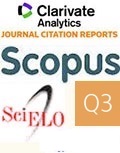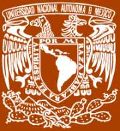|
Boletín de la Sociedad Geológica Mexicana Volumen 76, núm. 3, A040324, 2024 http://dx.doi.org/10.18268/BSGM2024v76n3a040324
|
 |
A moss species for magnetic biomonitoring the airborne particle pollution
Una especie de musgo para el biomonitoreo magnético de la contaminación por partículas suspendidas
Débora C. Marié1,2,*, Lucila Martino1,2, Marcos A.E. Chaparro1,2, Cristian D’Angelo1,2, Juan M. Lavornia3, Harald N. Böhnel4
1 Centro de Investigaciones en Física e Ingeniería del Centro de la Provincia de Buenos Aires (CIFICEN), UNCPBA-CICPBA-CONICET, Pinto 399, 7000 Tandil, Argentina.
2 Universidad Nacional del Centro de la Provincia de Buenos Aires (UNCPBA), Facultad de Ciencias Exactas, IFAS, Pinto 399, 7000 Tandil, Buenos Aires, Argentina.
3 Instituto de Ciencias Polares, Ambiente y Recursos Naturales (ICPA), Universidad Nacional de Tierra del Fuego (UNTDF), Ushuaia, Argentina.
4 Instituto de Geociencias (IGc), Universidad Nacional Autónoma de México (UNAM), Boulevard Juriquilla No. 3001, 76230 Querétaro, México.
* Corresponding author: (D.C. Marié) This email address is being protected from spambots. You need JavaScript enabled to view it.
How to cite this article:
Marié, D.C., Martino, L., Chaparro, M.A.E., D’Angelo, C., Lavornia, J.M., Böhnel H.N. 2024, A moss species for magnetic biomonitoring the airborne particle pollution: Boletín de la Sociedad Geológica Mexicana, 76 (3), A040324. http://dx.doi.org/10.18268/BSGM2024v76n3a040324
Manuscript received: September 29, 2023; Corrected manuscript received: November 27, 2023; Manuscript accepted: December 6, 2023
ABSTRACT
The magnetic properties of eightyfour moss samples of Orthotrichum diaphanum Brid. collected in a medium-sized city were studied. Mosses can be considered passive collectors of air particle pollution produced by vehicular and industrial emissions because they absorb their nutrients (and pollutants) from the air. Using the environmental magnetism techniques and this moss species, we determined the most impacted areas around factories and with high vehicular traffic, where mass-specific magnetic susceptibility χ reached values of 668 ×10-8 m3kg-1. These areas presented coarser magnetic particles (0.2 – 5 μm) than avenues and street sites. The studies of magnetic mineralogy indicated that magnetite is the main magnetic carrier. Scanning electron microscopy analysis showed the presence of Fe-rich spherules and particles of different sizes and morphologies. Laser-induced breakdown spectroscopy studies determined the presence of Fe, Mn, Al, Cu, Si, and Ti, some of which correlated significantly with magnetic parameters. The statistical comparison of magnetic parameters between moss O. diaphanum and lichen Parmotrema pilosum revealed that both species are effective biological indicators for air particle monitoring.
Keywords: mosses, magnetic biomonitoring, air particle pollution, LIBS, lichens.

